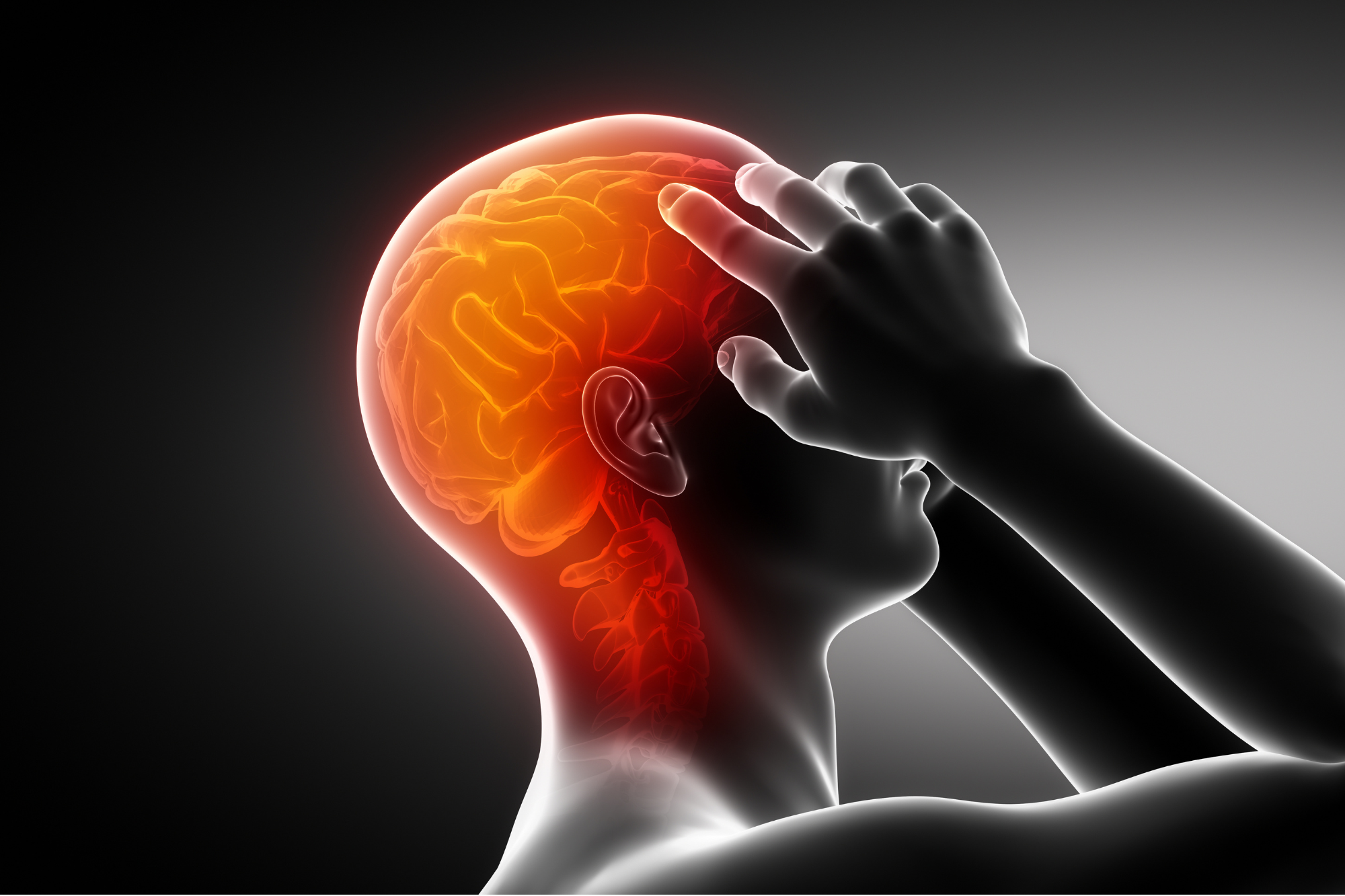Alleviating the Aftermath of a TBI
Each year, approximately 2.5 million individuals suffer from a traumatic brain injury (TBI) in the United States.[1] As a result of suffering a TBI, individuals can experience a multitude of physical effects, including: mood changes, memory or concentration problems, difficulty sleeping, headaches and fatigue.[2] In addition, individuals who experience a TBI are also more susceptible to developing a mental health disorder. A study conducted by Fann and colleagues in 2004 found that 49% of individuals who suffered a moderate to severe TBI and 36% of those with mild TBI also received a psychiatric diagnosis within a year following their injury. The prevalent comorbidity of traumatic brain injuries and mental health disorders is one that must not be overlooked by physicians and mental health care providers.[3]
Depression after a TBI: a distinct disease
Depression is one of the most common mental health disorders that TBI survivors face. The heightened risk for depression is largely due to the stress that occurs on the brain following a traumatic injury, such as a TBI. The brain’s neural pathways can become altered with a TBI, causing formally strong and functional pathways within the brain to no longer work properly.[4] How this relates to depression is we rely heavily on these pathways to understand and communicate our own emotions. With damage to these pathways, it becomes difficult to carry out these crucial functions, subsequently leading to an inability to process emotions.[5]
Common symptoms of depression that an individual may face following a traumatic brain injury include:[6]
Feelings of sadness, emptiness, or hopelessness
Angry outbursts, irritability or frustration
Sleep disturbances
Tiredness and lack of energy, with small tasks taking extra effort
Feelings of worthlessness or guilt
Trouble thinking, concentrating, or decision-making
Anxiety after a TBI
In addition to depression, anxiety is a common problem individuals face after experiencing a traumatic brain injury. Due to the changes that can occur to an individual following their accident, they may feel overwhelmed more easily in situations that previously did not bother them. This can be due to the fact that individuals may struggle to focus, think fast, or process information quickly - so in situations where these tools must be used, they can become easily anxious.[7] It's also important to note that individuals who suffered from anxiety prior to their TBI may find their symptoms have worsened following their accident and more difficult to manage.[8] Common symptoms of anxiety that an individual may experience after a TBI include:[9]
Feeling nervous, restless, or tense
Having a sense of impending danger or doom
Having an increased heart rate
Breathing rapidly
Having trouble sleeping
Having difficulty controlling worry
Targeted treatments
In order to effectively help treat the depression and anxiety that can occur following a TBI, combination therapy should be used. However, these therapies must be targeted directly to an individual’s TBI. The first treatment course that is often considered when attempting to alleviate the symptoms of depression and anxiety are SSRIs. This class of antidepressants are often used in the treatment of anxiety and depression, and work to increase the amount of serotonin in the brain.[10] The reason why they work so well in the treatment of depression and anxiety after a traumatic brain injury is their dopaminergic effects can help improve cognition in individuals who have suffered a TBI, while also improving their mental state.[11]
In addition to pharmacological interventions, cognitive behavioral therapy (CBT) is extremely effective at helping depression and anxiety in TBI survivors. Cognitive behavioral therapy may be tailored to utilize two things: cognitive restructuring and behavioral activation. Cognitive restructuring helps survivors address and redirect irrational thoughts following their accident, which allows an individual to shift to a more positive mental space.[12] Behavioral activation is a tool used when treating TBI survivors to encourage them to plan activities to improve their mood. This could be as simple as planning a daily walk or as extravagant as a trip away; using this technique allows survivors to look forward to their life again.[13]
Another extremely important treatment in addressing depression and anxiety following a TBI is positive psychology. Positive psychology helps to rewire a survivor's brain and encourage them to use forward, optimistic thinking. This could include simply writing in a journal a gratitude list for the day, or expressing positive thoughts out loud to another individual, daily. This practice has been extremely helpful with survivors' neuroplasticity - the ability of the brain to reform and strengthen neural pathways in the brain. Following a TBI, these pathways can be lost, which is why rewiring these pathways with positive thinking can help alleviate feelings of anxiety and depression.
Overall, it is essential that TBI survivors understand the risk factors for and key signs of anxiety and depression. If you or someone you know would like to learn more about how to seek help alleviating the symptoms of anxiety and depression following a TBI, please reach out to a licensed mental health professional (e.g., a psychotherapist, psychologist or psychiatrist) for additional guidance and support.
Contributed by: Daphne Lasher
Editor: Jennifer (Ghahari) Smith, Ph.D.
references
1 Brain Trauma Foundation. (n.d.). Frequently asked questions (FAQ). Brain Trauma Foundation. https://braintrauma.org/info/faq#:~:text=Each%20year%20about%202.5%20million,Falls%20(28%25)
2 The Mayo Clinic. (2021, February 4). Traumatic brain injury. Mayo Clinic. https://www.mayoclinic.org/diseases-conditions/traumatic-brain-injury/symptoms-causes/syc-20378557
3 Fann, J. R., Burington, B., Leonetti, A., Jaffe, K., Katon, W. J., & Thompson, R. S. (2004). Psychiatric illness following traumatic brain injury in an adult HealthMaintenance organization population. Archives of General Psychiatry, 61(1), 53. https://doi.org/10.1001/archpsyc.61.1.53
4 Cooney, E. (2023, July 6). Why depression after traumatic brain injury is distinct - and less likely to respond to standard treatment. STAT. https://www.statnews.com/2023/07/06/depression-after-traumatic-brain-injury/
5 Ibid.
6 The Mayo Clinic. (2022, October 14). Depression (major depressive disorder). Mayo Clinic. https://www.mayoclinic.org/diseases-conditions/depression/symptoms-causes/syc-20356007
7 Model System Knowledge Translation Center
8 Ibid.
9 The Mayo Clinic. (2018, May 4). Anxiety disorders. Mayo Clinic. https://www.mayoclinic.org/diseases-conditions/anxiety/symptoms-causes/syc-20350961
10 The Mayo Clinic. (2019, September 17). The most commonly prescribed type of antidepressant. Mayo Clinic. https://www.mayoclinic.org/diseases-conditions/depression/in-depth/ssris/art-20044825
11 Fann, J. R., Hart, T., & Schomer, K. G. (2009). Treatment for depression after Traumatic Brain Injury: A systematic review. Journal of Neurotrauma, 26(12), 2383–2402. https://doi.org/10.1089/neu.2009.1091
12 Flint Rehab. (2023, January 6). Brain injury and depression: Causes, symptoms, & treatments. Flint Rehab. https://www.flintrehab.com/brain-injury-and-depression/
13 Ibid.



